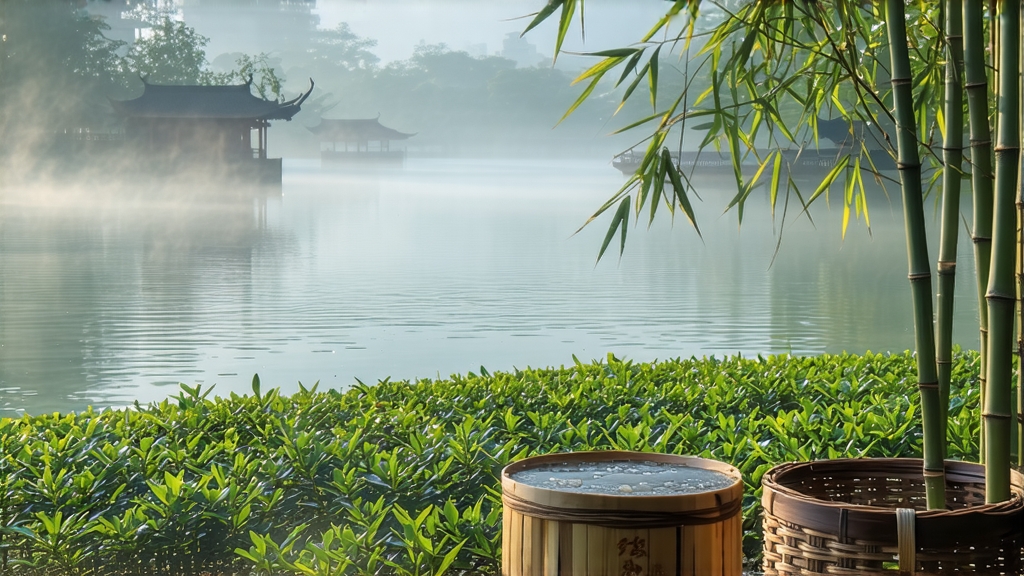
Among the jade-green pantheon of Chinese green teas, none carries the romance of lake mist and imperial whim quite like Biluochun. Its name translates literally to “Green Snail Spring,” a poetic compression of three truths: the liquor’s jade color, the hand-rolled spiral shape that resembles a tiny snail shell, and the fact that it is plucked and finished in the brief window between Qingming and Grain Rain, when Jiangnan exhales its softest breath. Foreign drinkers often meet it after they have already courted Longjing or Gunpowder, yet one sip of Biluochun convinces them that Chinese greens are not a monotone chorus but a spectrum of whispers, each leaf singing a different dialect of freshness.
History: from lethal curiosity to tribute tea
Legends place the tea’s birth in the Dongting mountains of Suzhou during the late Tang dynasty, but the first verifiable record appears in the Ming “Changzhou Gazetteer” of 1644, where it is listed under its older name “Xia Sha Ren Xiang”—“Scary Fragrance.” The story behind the epithet is irresistible: a tea-picking girl, startled by the sudden appearance of a snake, dropped her entire basket into the undergrowth. That night the leaves oxidized slightly, exuding an intoxicating perfume that villagers first mistook for the scent of lethal night-blooming flowers. When daylight proved the aroma harmless, they brewed the accidental harvest and found a cup so floral that even the local magistrate forwarded it to the emperor. The Kangxi Emperor, touring the south in 1699, accepted a sample, found its name inelegant, and rechristened it Biluochun to honor its shape and season. From that year until the fall of the Qing, the entire crop of Dongting Dongshan and Xishan was floated up the Grand Canal to Beijing, packed in lead-lined chests cushioned with jasmine petals to preserve every volatile molecule.
Micro-terroir: an island in a freshwater sea
Dongting Mountain is not a single peak but two peninsulas that jut into Taihu Lake, China’s third-largest freshwater body. The lake acts as a gigantic solar battery, storing daytime heat and releasing it at night, so spring temperatures remain within a 6 °C swing—ideal for slow amino-acid accumulation. The slopes, rarely steeper than 25°, are terraced with granite retaining walls built during the Song dynasty; their mineral leachate adds a faint flint note to the tea. Around every seventh row of tea bush, farmers still plant peach, plum, and loquat trees. When these bloom in late March, their pollen drifts onto the nascent tea buds, contributing a subtle orchard nuance that chemists identify as increased concentrations of geraniol and linalool. No other Chinese green enjoys such an intimate botanical neighborhood; the intercropping is so dense that pickers often emerge with petals stuck to their bamboo baskets.
Cultivars: two clans of the snail
Although the region legally protects only “Dongting Biluochun,” two distinct cultivars dominate. The heirloom “Dongting Qunti” is a seed-propagated landrace with small, thick leaves that tolerate lake fog; it yields a cup of extraordinary depth but only 250 kg per mu. In the 1980s researchers released “Fuding Dabaicha” cuttings to boost yield; this clone matures five days earlier and produces almost twice the biomass, yet its thinner cell walls translate into a lighter, more honeysuckle liquor. Purists can tell them apart by the color of the dried spiral: landrace leaf is moss-green with silvery revers, while clone leaf is uniform jade. Both qualify for the official GI label, but top-tier producers segregate them, pricing the landrace at triple the clone.
Plucking choreography: 6.5 hours of spring
The picking window opens when the overnight low stays above 8 °C and the five-leaf set has reached “one bud with one unfolded leaf,” a stage locals call “sparrow’s tongue.” Experienced pickers work from 5:30 a.m. to 10:00 a.m., before the sun burns off the mist. Speed matters: every 500 g of finished tea needs 60,000 buds, translating into 30,000 hand-breaking motions. The basket must never be overfilled; compression triggers enzymatic browning that will later read as spinach in